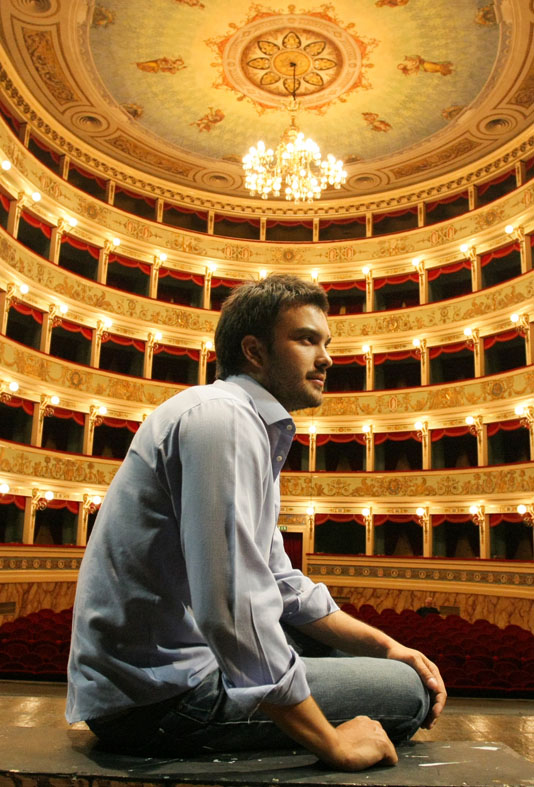
Lev Pugliese is an internationally active director with roots in Italy and a background in classical music and opera from an early age. He has previously directed Turandot in both Italy and China. This summer, he makes his debut at Opera på Skäret. Here, he shares what draws him to Skäret, his perspective on Turandot, and his creative process.
This is your first time at Skäret. What attracts you to work at Opera på Skäret?- – Several things! Over the years, I’ve met many singers who have performed at Opera på Skäret, and they’ve spoken very highly of their experiences. When I met Alexander Niclasson (Artistic Director at Opera på Skäret), I felt that we clicked. Both of us grew up in families with strong connections to opera, and like Alexander, I have worked closely with my father in opera contexts.
I’ve also come to understand that Opera på Skäret fosters a familial atmosphere, the kind that arises when everyone lives and works together in the same place for a while with the goal of creating something together. In such an environment, dialogue between all participants becomes natural and obvious, which ultimately contributes to the authenticity of what we create.
You’ve directed Turandot before—tell us about that!
– Yes, three times, actually – twice in Italy and once in China. The production in China was particularly special because that’s where Turandot is set. It was a unique challenge for me as a foreign director to create a production that the Chinese themselves would appreciate and find relevant.
What do you see as the opera’s central themes and messages?
– The central themes of Turandot revolve around love as a transformative force. Puccini envisioned the opera culminating in an explosion of love, where Turandot’s icy, unyielding nature is shattered by a kiss – an awakening that allows her to feel and express herself for the first time. However, he struggled to make this transformation believable within the opera’s brief final scene.
Viewed through a psychological lens, Turandot’s coldness and cruelty are defensive mechanisms, shaped by unresolved fear and inherited trauma, as revealed in the aria “In questa reggia”. Her decree to execute failed suitors is not just an assertion of power, but a symbolic barrier against intimacy, protecting her from reliving the historical violation she associates with love.
Calaf’s persistence, culminating in his act of radical vulnerability – offering his name freely, provides a corrective experience that breaks the cycle of fear-based control. Instead of conquering her through force, he presents love as a choice, mirroring the resolution phase in trauma therapy, where past wounds are integrated rather than repressed.
By accepting love, Turandot dismantles her psychological armour, allowing her true self to emerge. Her final declaration, naming Calaf as “Amor,” signifies not just romantic surrender but a profound reintegration of identity – a release from the past and a newfound freedom to embrace her authentic self.
How do you balance staying true to the original work while making it relevant to today’s audience?
– The story I hear when I listen to the music, read the score, and watch other productions of Turandot is my interpretation, and I am someone who lives in today’s society. I trust that interpretive process and feel no need to contrive anything. There are directors who, in an effort to create something they consider relevant, produce something that ends up being entirely different from the original work. Honestly, I don’t really see the point of that and sometimes feel they might be better off creating their own opera.
How do you prepare for a new project? What does your creative process look like?
– I always start with the music. I listen to it and read the score. Sometimes, I watch previous productions. I also research the time period in which the opera is set. During this preparation, images begin to form in my mind. I love that part of the process, seeing everything like a film.
Eventually, I move into the phase where the “film” in my head becomes a reality. That part is, naturally, more challenging. Reality brings limitations that can affect the vision, but that doesn’t mean the result is of a lower quality—just different because working together with everyone involved brings contributions that I consider add value.
In the end, the goal is for the audience to be emotionally moved above all else. Reflections and rational thoughts can come later—perhaps on their way home.